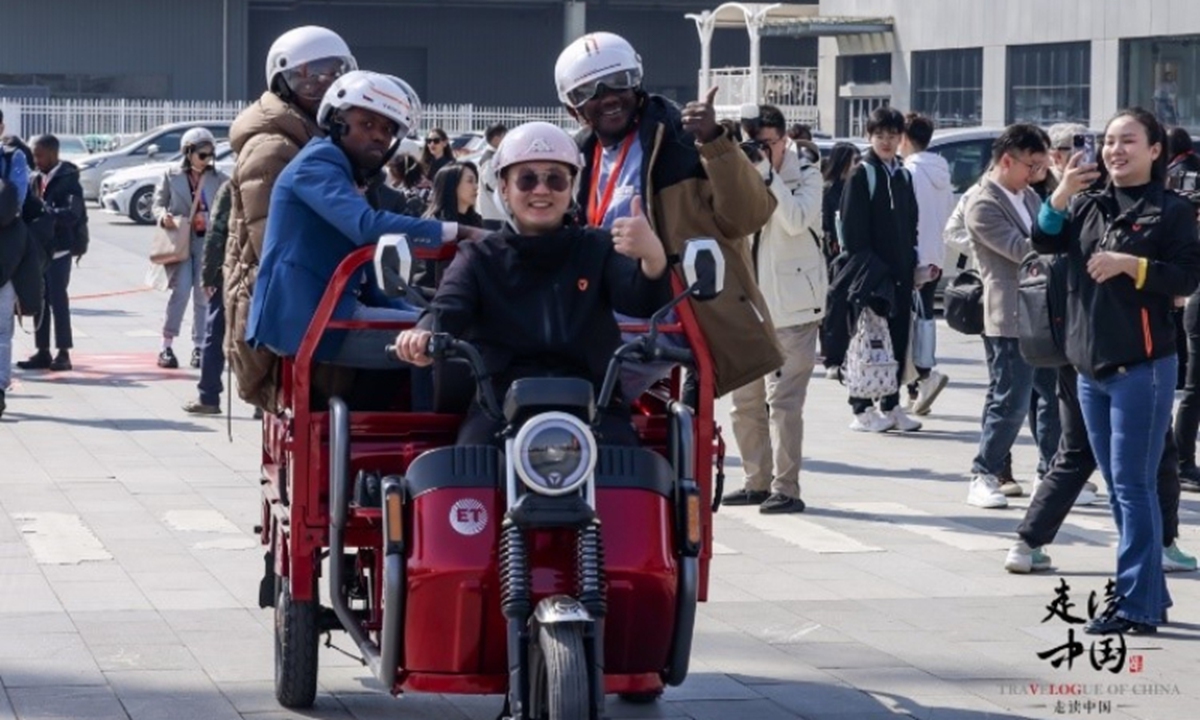GT Voice: Electric tricycles' popularity in US highlights allure of Chinese manufacturing

Foreign journalists ride tricycles at the Yadea Industrial Park in Wuxi, East China's Jiangsu Province on March 20, 2024. Photo: huanqiu.com
The growing popularity of Chinese-made electric tricycles in the US has emerged as an interesting phenomenon in China-US trade. The number of orders placed by American consumers for Chinese-made electric tricycles on various e-commerce platforms has surged this year, according to a CCTV report.
The phenomenon not only highlights the allure of Chinese manufacturing for American consumers but also underscores the American market's desire for environmentally friendly, convenient and cost-effective transportation choices, reflecting the irrationality of Washington's protectionist tariffs.
The success of the Chinese-made electric tricycles in the US can be attributed to their practical features and economic advantages. First, amid the global push for green energy and lower carbon emissions, electric tricycles align with the low-carbon lifestyles sought by American consumers due to their energy-saving and environmentally friendly benefits.
Second, their adaptability and convenience make them popular in the US, as they can be used for city commuting or countryside transportation.
Third, the affordability of electric tricycles compared with conventional cars makes them a more appealing option for American consumers.
If anything, the popularity of electric tricycles in the US serves as a microcosm of American consumers' demand for Chinese-made products. The combined advantages of Chinese manufacturing in terms of product design, functionality, cost-effectiveness and environmental friendliness enable Chinese products to quickly fill any gap in the market, to satisfy the needs of American consumers.
The same is also true for electric vehicles (EVs). With the increasing focus on reducing carbon emissions and promoting sustainable development worldwide, EVs are emerging as the future of the automotive industry.
While demand for EVs is growing in the US, local manufacturers are struggling to fully meet consumer needs in certain segments and price ranges. By contrast, Chinese EVs, with their advances in battery technology, motor efficiency, vehicle integration and cost-effectiveness could be the solution that American consumers are looking for.
However, anticipating that American consumers might welcome the arrival of Chinese EVs, the Biden administration chose to keep them out of the US market. The Biden administration in mid-May announced plans to increase tariffs on Chinese EV imports from some 25 percent to 100 percent, in addition to the 2.5 percent tariff on all vehicles imported into the US.
The move ignores the basic law of the market and the real needs of consumers. In a globalized economic system, trade protectionism often leads to a series of negative chain effects that not only fail to truly protect the interests of the US, but may even cause higher prices for consumers by limiting market choices and competition.
History shows that protectionist measures may shield domestic industries in the short term, but in the long run, they are harmful to innovation and competitiveness in domestic industries. In the absence of competition from foreign products, domestic companies may become too complacent to improve their products or consider consumer needs.
In addition, trade protectionism could lead to a lack of competitive pricing for EVs in the US, potentially dampening consumer interest in EVs and slowing their widespread adoption in the American market. In the long run, this will not only hurt American consumers, but also impede the ambitious US goal to decarbonize its economy by 2050.
US demand for Chinese-made goods is actually a result of market preferences based on factors like the supply-demand relationship, competition, efficiency and innovation. Chinese manufacturers have the potential to cater to American consumers through continuous technological innovation and product upgrading. Any attempt to disrupt market dynamics could eventually draw a backlash.



